Ceramics : Through the Lens of Fine Art
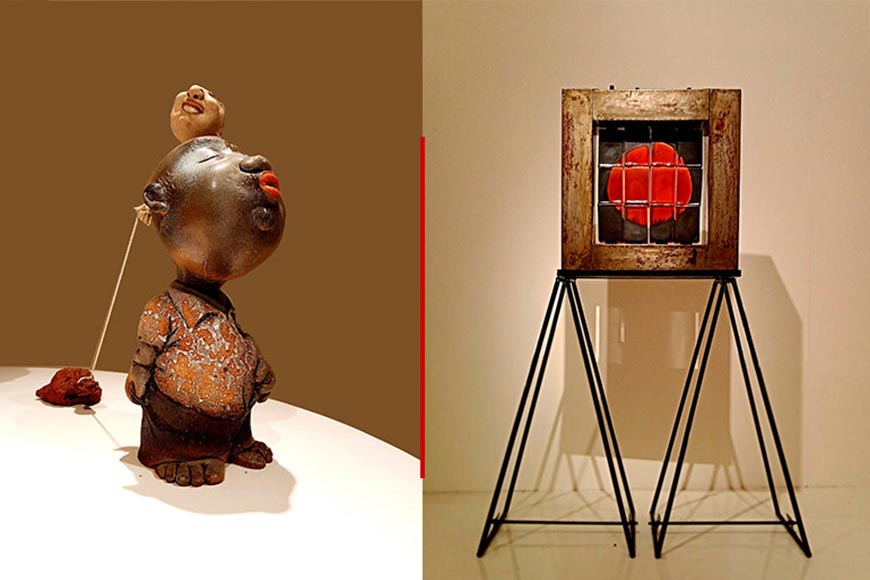
The medium of art that requires the most intimate human touch and undergoes a radical transformation is ceramic. Be it a pot or a sculpture, its clay can be shaped in several ways such as beating in sheets, pinching, or turning a potter’s wheel. The firing part is carried out in kiln at various temperatures and the final product is named according to the corresponding temperature, like stoneware, earthenware, or terracotta. Firing also ensures a permanent glaze as it is often preferred. Fire transforms the clay into ceramic. Hence, among all arts it is ceramic that symbolizes the philosophical notion of ‘becoming’ most vividly. This is one of the reasons why this prehistoric medium still continues to attract contemporary artists for creating their pieces of fine art.
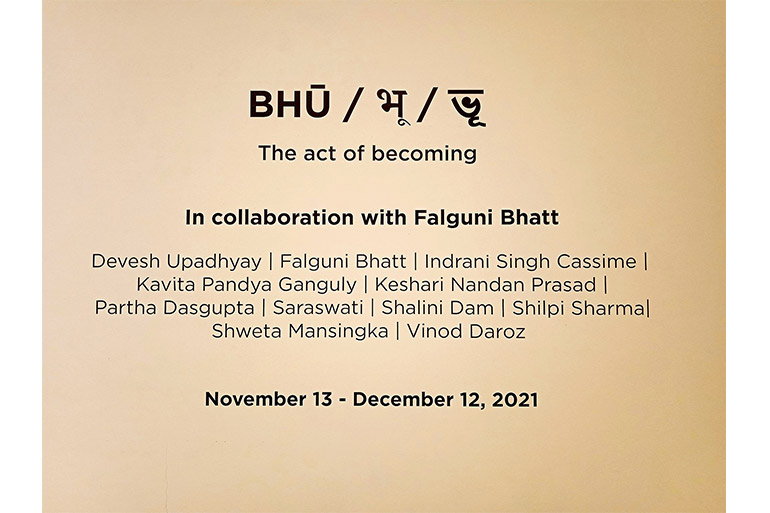
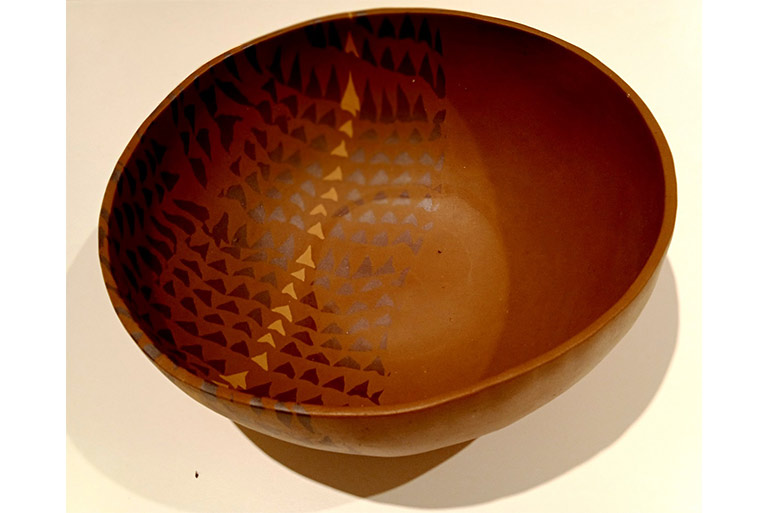
Emami Art ventures to bring this artistic approach to the forefront through their ongoing collective exhibition titled BHŪ which will be on view till 12th of December, 2021. The enigmatic Sanskrit word Bhū contextually refers to both ‘earth’, and ‘to be’ or ‘becoming’. The becoming of clay occupies the focus of the exhibition. As we see here, Kavita Pandya Ganguly’s work, Jungle of Emotions seeks to articulate the complexity of unconscious mental elements through a psychedelic colour scheme. But her work oversteps the line between shallow illustration and fine art. Indrani Singh Cassime leaves her mark in her masterful handling of Anagama kiln method which manipulates wood ash for colour effect. Her Indomitable is an unidentifiable primitive form that impacts the viewer with its hollow yet massive structurality. Her pottery-work, Tracking the Tribe too seems like a call of the primitive. In Kaal Chakra Kavita Nandan Prasad has created three wheel-like pieces symbolizing perhaps the present, past, and the future. The intricacies of the maze-like interwoven structures in each piece leave the viewer awestruck. Her ‘sheet-rolling’ and cracked glazing techniques, despite being little ostensible, are simply brilliant. Celebration and The Introverts by Devesh Upadhay present no more substance than store bought dolls. His intention to remark on the grim reality of our time through comic figuration has achieved no success beyond that. The large wall piece Samudra Manthan by Vinod Daroz is a fine example of both wheel-turning and painting methods. But apparently, the work ends up being a mere decorative piece devoid of and deeper insight. Sweta Mansingka’s wall piece, The Seeker consisting of twelve spheres, strikes the viewer hard. The spheres bring to mind the waning of the moon but the stark charcoal effect on ceramic makes him speechless.
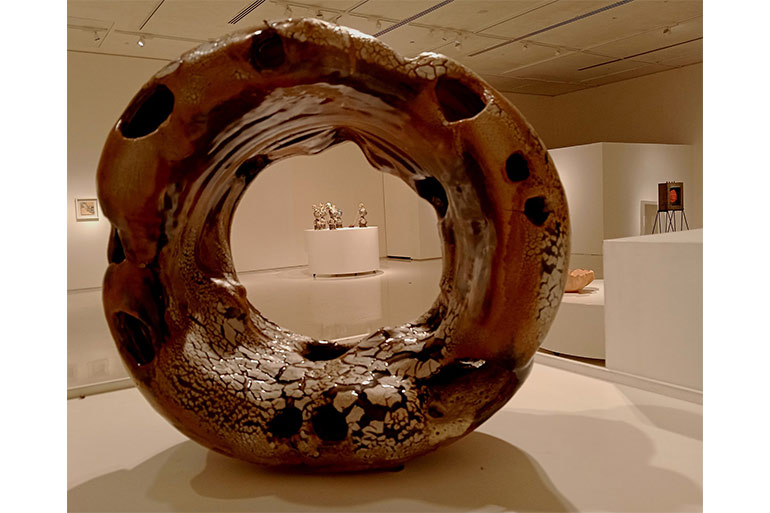
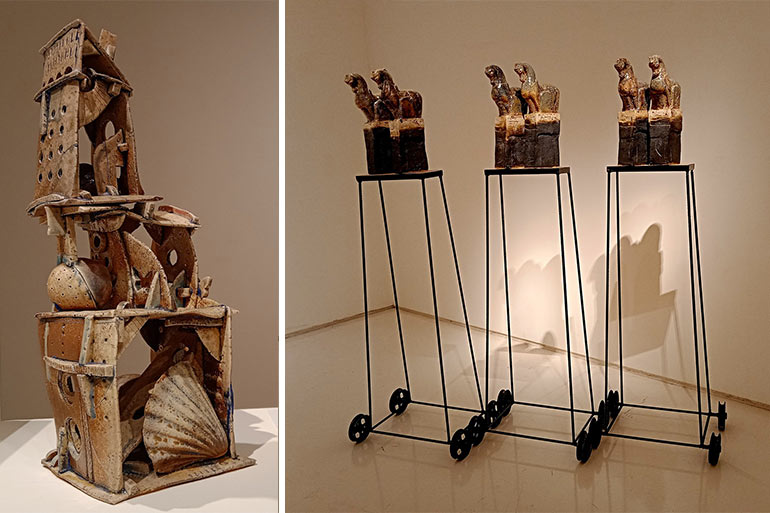
The showstopper, for the lover of true fine art at least, is Partha Dasgupta’s Mark on Clay-1. It is an unglazed and dusty block shaped piece engraved with obscure figures and indecipherable scripts. The piece strives to recapture the very process of becoming that an archaeological site goes through in its formative process itself. Like the layers of earth preserving artefacts of lost civilizations over the ages, Dasgupta has built this piece layer by layer, often reusing the same mould with alteration and addition of new smaller parts and coloured clay. His carefully painted sculpture Mark on Clay-2 is a philosophical meditation of a singular reality or wholeness manifested in the diversity of the material beings.
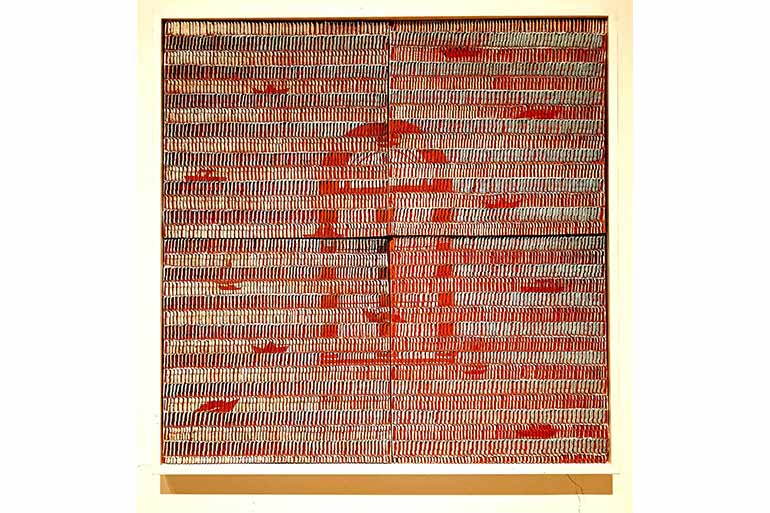
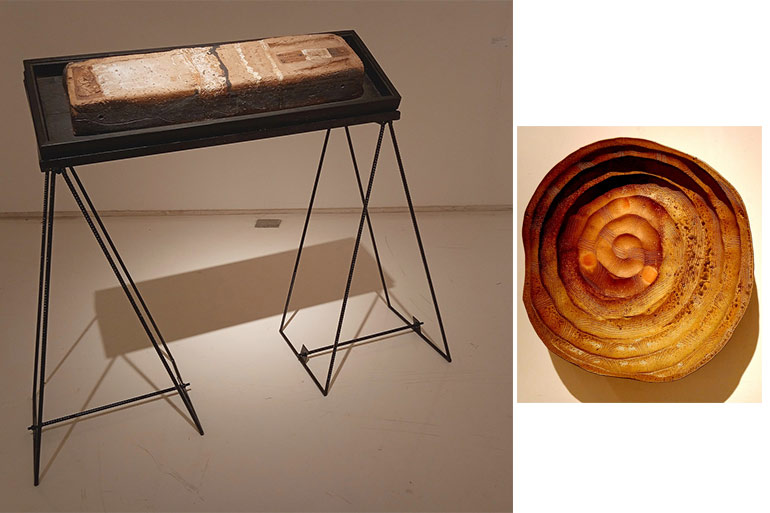
Though most of the pieces in the show have failed to escape the lure of the decorative and ended up in something close to showpieces the exhibition is worth viewing for its keen attention to the often neglected art of ceramic. The exhibition features other artists namely Shilpi Sharma, Falguni Bhatt, Saraswati, and Shalini Dam.
More details about Exhibition : Click Here










